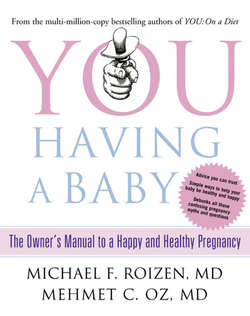Читать книгу You: Having a Baby: The Owner’s Manual to a Happy and Healthy Pregnancy - Michael Roizen F. - Страница 59
Testing, Testing
ОглавлениеIt can be hard to tell from the surface whether you have gestational diabetes, so you should pay special attention if you have the risk factors or the main symptoms: increased thirst and urination, blurred vision, fatigue, and/or infections of the bladder, vagina, and skin. This issue is important: 25 percent of women with gestational diabetes will go on to develop full-blown diabetes, and the greatest risk is within the first five years after delivery, especially in overweight mothers.
Today all pregnant women are screened for diabetes, even those at low risk (under twenty-five, not obese, white, and no family history of diabetes). For a fasting blood test (no food within eight hours), blood sugar should be under 95 mg/dl.* In your doc’s office, you’ll also be given a test called a glucose challenge, in which you’ll consume 50 grams of sugar. It’s why you get that cup of orange soda, an admittedly nasty concoction called Glucola. If your blood sugar level is higher than 135 mg/dl after an hour, it’s a sign that you’re not clearing glucose fast enough, and you’ll be given a second challenge with 100 grams of sugar.
In this case, after consuming a load of sugar (in a soda or candy bar), your blood sugar will be monitored over three hours. Your goal is to be less than 180 mg/dl in the first hour after eating, less than 165 after two hours, and less than 145 after three hours. If not, your doc will talk to you about the first line of treatment: controlling blood sugar through diet and exercise. If that doesn’t work, she may consider prescribing antidiabetic drugs for you.
and store every excess calorie they can as fat to prepare for future famines. Too many calories condition them to expect overabundance and to indulge in a fat-filled life that comes with all of the fixings that complicate it.
Most times, kids fall in the middle of that bell curve; right in the normal range. That’s why the middle of the baby-weight bell curve is bigger than a septuplets’ grocery bill. But you also need to be aware of what happens when you teeter toward the extreme edges of fetal weight, because that’s when your provider may need to intervene.
To examine these ends of the bell, we’re going to look at how babies get their nutrition and how metabolism influences that process. Through that discussion, you’ll learn about why some children grow too much, why some don’t grow enough, and if that is the case for you, how you can guide your baby back to the middle.
